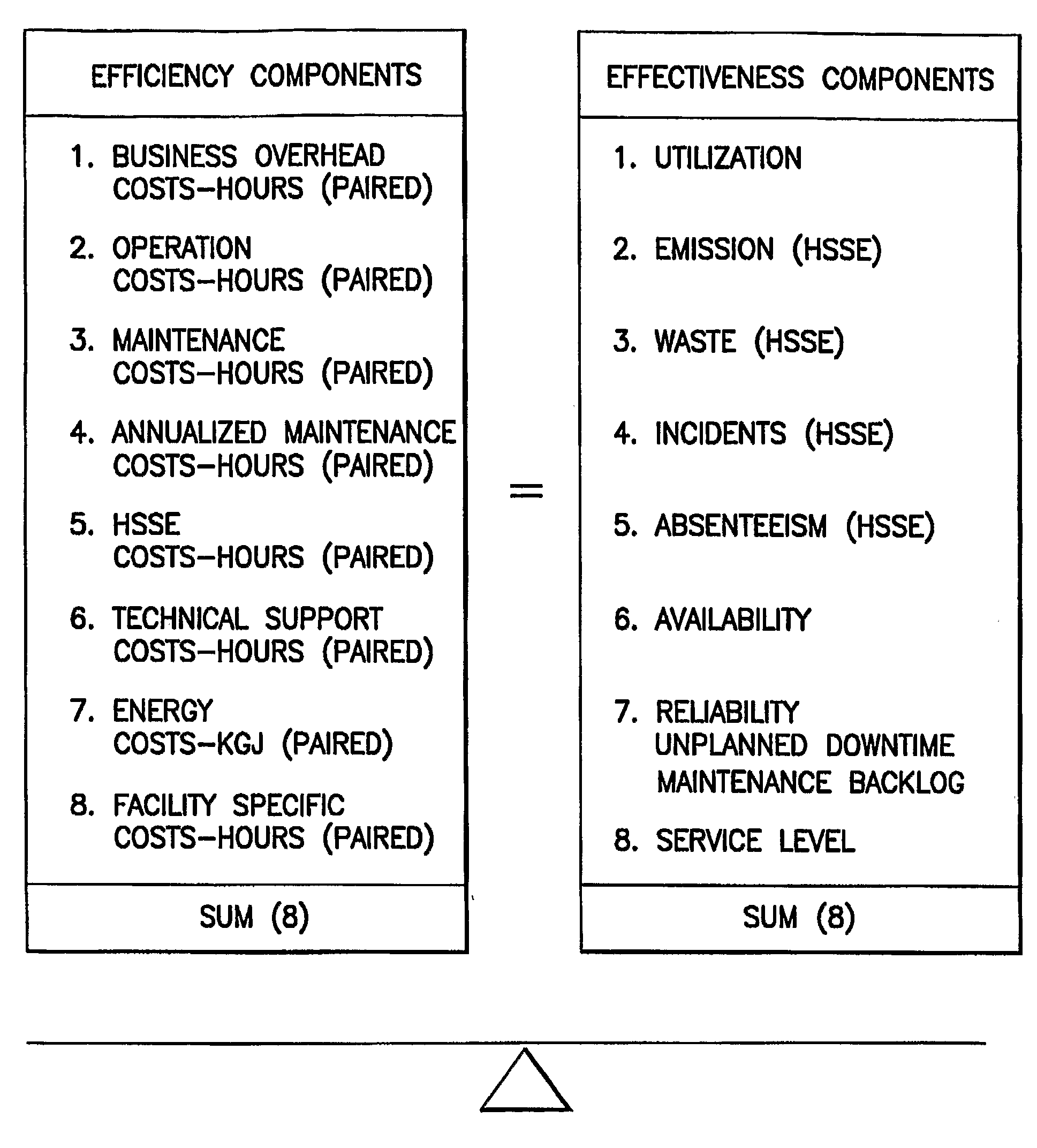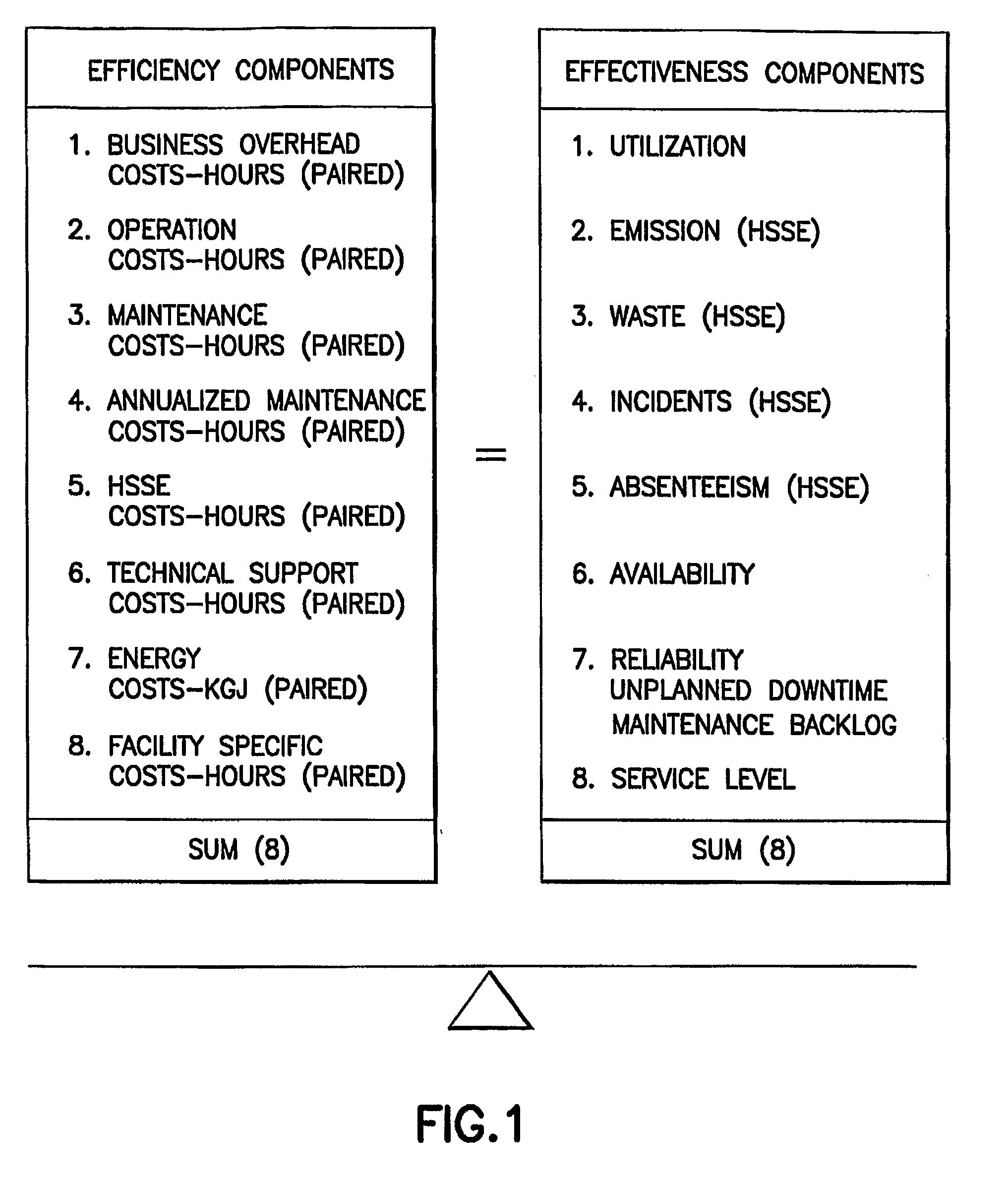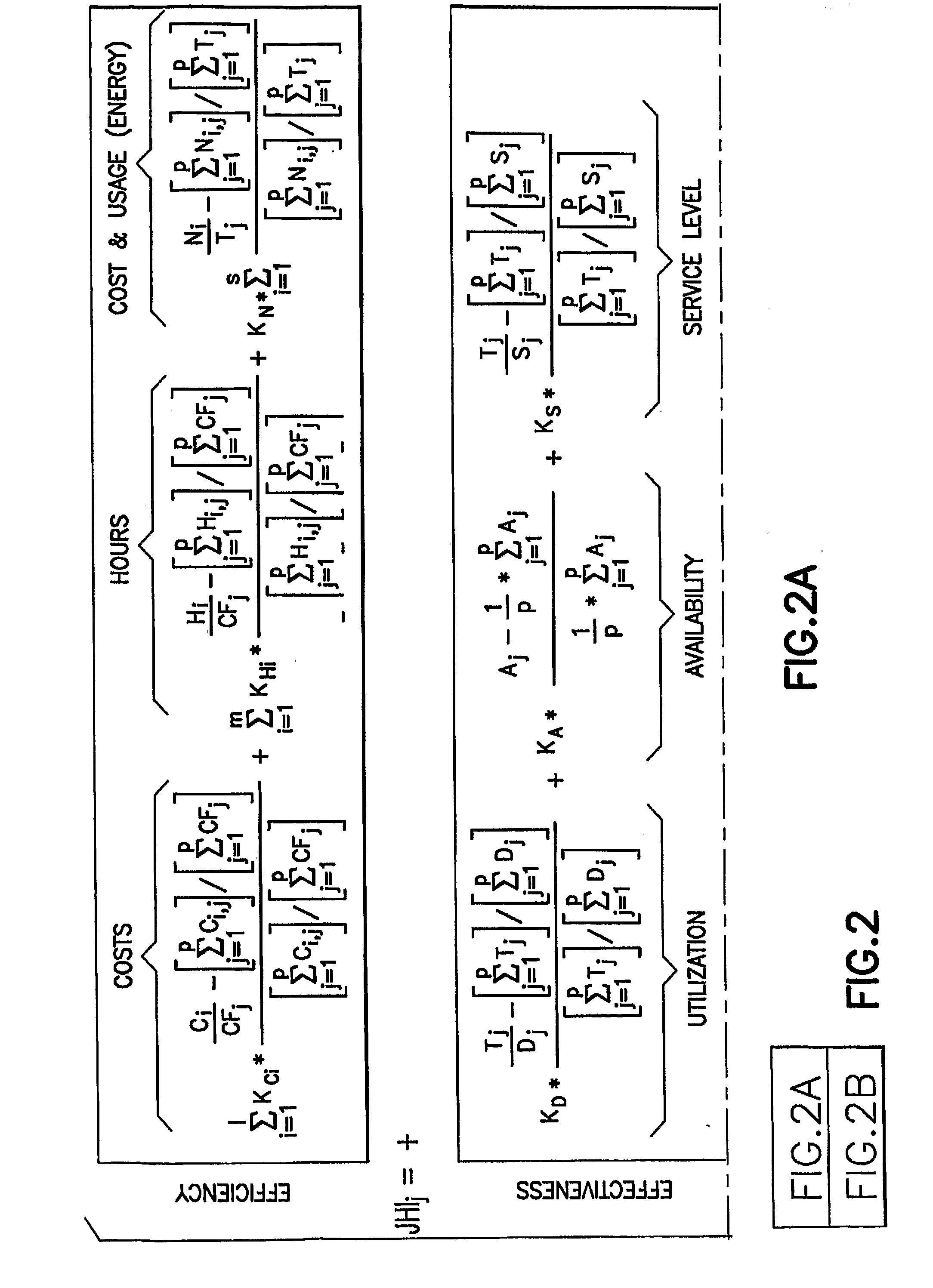Method For Measuring The Overall Operational Performance Of Hydrocarbon Facilities
a technology for hydrocarbon facilities and operational performance, applied in the field of business process measurement and benchmarking methods, can solve the problems of inability to recognize the significance of interdependencies between metrics, lack of consistent and scientifically sound methods in the industry for measuring overall operational performance, and many of the benchmarking tools currently employed lack accuracy, so as to improve the monitoring and control of operations, improve the effect of asset performance, and inform the balan
- Summary
- Abstract
- Description
- Claims
- Application Information
AI Technical Summary
Benefits of technology
Problems solved by technology
Method used
Image
Examples
Embodiment Construction
[0030]The invention (JHI) is a cumulative indicator of the overall competitiveness of an oil and gas asset, based upon efficiency and effectiveness of its performance. It is a numerical value representing the percentage deviation of performance, relative to the corresponding industry or peer group average. For example, if a particular asset has a JHI equal to 10, this would indicate that its performance is 10% better than the average performer. If the calculated JHI is a negative number, it indicates that the performance is worse than the average industry standard. The spread of the Index is not restricted by lower or upper limits (i.e. −100% to +100%). Nevertheless, extremely high deviations have not been observed due to the cumulative nature of the Index.
[0031]Efficiency measures the degree to which an organization operates with a minimum consumption of resources. It reflects productivity and is expressed in terms of money, time or effort expended. In contrast, effectiveness measu...
PUM
 Login to View More
Login to View More Abstract
Description
Claims
Application Information
 Login to View More
Login to View More - R&D
- Intellectual Property
- Life Sciences
- Materials
- Tech Scout
- Unparalleled Data Quality
- Higher Quality Content
- 60% Fewer Hallucinations
Browse by: Latest US Patents, China's latest patents, Technical Efficacy Thesaurus, Application Domain, Technology Topic, Popular Technical Reports.
© 2025 PatSnap. All rights reserved.Legal|Privacy policy|Modern Slavery Act Transparency Statement|Sitemap|About US| Contact US: help@patsnap.com



